|
There was a time when “oaky” Chardonnay ruled and made my palate sing as I savored the rich, buttery, and vanilla nuances the oak imparted. And then unoaked Chardonnay started to trend, and I found myself enjoying these lighter, refreshing wines that were fermented and aged in steel tanks, allowing flavors such as apple, citrus, pear, and minerality to shine through. However, I still enjoy oaked Chardonnay as long as the oak doesn’t dominate. About 20 months ago, I was introduced to and wrote about Ron Rubin and River Road wines. They recently sent me three styles of Chardonnay, but before I dive into them, here is a recap of the winery’s history and terroir. With a degree in viticulture and enology at UC Davis obtained in the early 70s, Ron Rubin fulfilled a 40-year dream, and in 2011 purchased River Road Family Vineyards and Winery. The winery is located in the Green Valley AVA, a subzone of Sonoma’s Russian River Valley, and sits in the mid-slope “sweet spot” of the Green Valley. Green Valley – Russian River AVA Although Green Valley is one of the smallest appellations in Sonoma, it is the most consistent of any North Coast appellation in terms of soil, climate and flavor. Its trademark is the fog and Goldbridge soil. The fog that originates at the Petaluma Wind Gap in the coastal mountains defines Green Valley. Due to Green Valley’s proximity to the gap, this is the first place that the fog rolls in and the last place to burn off. Because of this, Green Valley encounters cooler morning temperatures for a longer period, more so than the northern parts of the Russian River. Temperature shifts are subtler here, and the cool marine climate, cooler daytime readings, and long growing season allow the grapes to slowly develop character and flavor as well as retain acidity and balance of sugars. This, in turn, adds to the complexity, aromas, lower alcohol, and freshness of the wines. Goldridge soil is the most predominant type of soil here. It is 60% sand, 10% clay, and 30% silt particles that are the remains from an ancient inland sea dating back three to five million years ago. The soil consists of a top layer of fine sandy loam covering a subsoil of sandy loam and fractured sandstone. The soil provides good drainage and excellent natural chemical balance. This is a perfect growing environment for cool-climate grapes such as Pinot Noir and Chardonnay. With lead winemaker, Ed Morris, Ron produces two well-defined brands, Ron Rubin Wines and the River Road collection. River Road Collection Most of the wines in this portfolio are priced from $14-$20. The portfolio includes an extensive range of wines established by the winery’s former owners. Ron believes that good wine should be accessible, “exceptional wines at a great value.” A signature of this collection is its easy-drinking style. Ron says, “I’m a fan of low alcohol wines. I keep the alcohol in check to produce elegant wines that you can enjoy, glass after glass.” River Road Un-Oaked Chardonnay 2020
The grapes for all of these Chardonnays are sourced from both estate-owned and family-owned vineyards. Fermentation and aging for this wine are in 100% stainless steel tanks. This is a crisp and light wine with citrus, floral, and sweet apple notes on the nose. The palate offers refreshing notes of grapefruit, pear, melon, and green apple, along with a slightly sweet edge. Alcohol: 12.5% SRP: $15 River Road Reserve Un-Oaked Chardonnay 2020 What sets this un-oaked Chardonnay apart from the one above is that it is aged “Sur lie,” (which means on the lees), for four months. The objective is to produce a fuller-bodied and richer Chardonnay without oak influence. Aromas of apple, citrus, and stone fruit segue onto the palate with a creamy texture, a touch of tropical fruit, with white peach lingering on the finish. Alcohol: 14% SRP: $17 River Road Double Oaked Chardonnay 2019 No, this wine doesn’t spend twice the time in oak barrels. A special blend of American and French oak barrels is used to age the wine. The nose exhibits apple, vanilla, and stone fruit that follow through to the palate. This full-bodied wine shows vanilla, subtle buttery notes, white peach, and baking spice on the palate. If you are a fan of oaked Chardonnay, this is one to try. Alcohol: 14.8% SRP: $17 Enjoy these wines as aperitifs or with appetizers, seafood, poultry, light pasta, or salads. Until next time… Cheers! Penina To leave a comment or if you have an inquiry, please contact me at [email protected] It has been almost two years since I last met with wine producers and toured vineyards in person. My interactions have been restricted to a world of virtual meetings and wine tastings. With travel finally opening up again, my virtual plane has been retired for now, and I am finally taking to the skies once again and heading to Spain! I will return soon to regale you with stories about wine, food, and so much more!
Until then... October is a beautiful time of year filled with fall festivals, hayrides, and dazzling mum displays. The trees are bursting with color, and the crisp smell of autumn is in the air. It is also Halloween month, a holiday that is enjoyed and celebrated by both young and old. There are pumpkins to carve, costumes to make, parties to plan, and of course, let’s not forget scary haunted houses, spooky trails, and ghost tours! Halloween is also a time for lots of fun creativity in the kitchen and making many delectable treats for children. Of course, adults enjoy holiday treats as well, especially beverages. If pumpkin lattes and hot apple cider aren’t your thing, there are more “spirited” Halloween-themed drinks such as Poison Apple Cocktail, Boozy Witch’s Brew. Black Devil Martini and Zombie Slime Shooters! But if you prefer sipping wine, please step into my "Hallowine" cellar, if you dare, and I’ll tell you a few tales! Casillero del Diablo Once there was a winemaker named Don Melchor Concha y Toro who founded the Concha y Toro winery in Chile in 1883. He started his winery with grape varieties that he brought back to Chile from the Bordeaux region of France, with which he made exquisite wines. Don Melchor reserved an exclusive batch of these wines for himself that he kept under lock and key. According to legend, these wines continually disappeared from the cellar. So to stop the theft of these wines, Don Melchor spread a rumor that the devil himself lived in the cellar guarding the wines. Everyone became terrified, and some people claimed that they had seen the devil. The rumor worked, the thefts stopped, and Don Melchor continued to enjoy his wines. To this day, the cellar is known as the “The Devil’s Cellar” and remains protected…forever! Casillero del Diablo, which means “devil’s locker” in Spanish, is a legendary brand that is part of Concha y Toro’s portfolio with the “devil” logo on every bottle. The cellar is located in Pirque, close to Santiago, and is open for tours. Here are two wines from Casillero del Diablo to add some devilish fun to your Halloween. Casillero del Diablo Reserva Red Blend DO 2018 The grapes for this red wine are a mysterious blend of Syrah and Cabernet Sauvignon sourced from Rapel Valley. The wine is shrouded in secrecy about its length of aging, but rumor has it that it spent about ten months in French oak. But there is no mystery as to this wine’s aromas and taste! Nose: Dark berries, black cherry, fig, spice, and vanilla Palate: Juicy plum, dark cherry, spice, dark chocolate, and soft tannins Alcohol: 13.5% SRP: $11.99 Pair with grilled meat, game, seared tuna, hearty stews, and pasta. Casillero del Diablo Reserva Cabernet Sauvignon 2019 The grapes for this wine are sourced from Central Valley D.O. Its aging remains a secret closely guarded by the devil in the cellar! Nose: Intense aromas of dark berries, cherries, plum, floral, and spice. Palate: Aromas spill onto the palate with a touch of anise. It is beautifully balanced with firm tannins and dark chocolate and plum lingering on a long finish. Alcohol: 13.5% SRP: $11.99 Pair with hearty or spicy cuisine, grilled meat, aged cheese, or stews. Flora Springs Flora Springs is a family-run winery located in Napa Valley, CA, founded in 1978 by Jerry and Flora Komes. Today, their son John and daughter Julie are the proprietors of the estate, and Julie’s husband, Pat Garvey, is the vineyard director and proprietor. The property is situated among vineyards planted in the late 1800s, now part of the estate vineyards. When the Komes bought the estate, it came with a “Ghost Winery.” originally constructed in 1885. “Ghost Winery” is a term used to describe any winery between 1860 and 1900 that was non-functional and in disrepair in the early 20th century due to the Great Depression, phylloxera, and Prohibition. According to Flora Springs, “Before 1919, when Prohibition began, there were an estimated 713 winery businesses in California. Following its repeal 14 years later, only 40 wineries were left. This resulted in a wave of abandoned wineries throughout the next several decades. Many wineries of the time disappeared forever; others were left in ruins.” After his parents bought the property, John completely renovated the old stone winery into a home and lives there with his wife, Carrie. In honor of Flora Springs history, every year around Halloween time, they bottle a small amount of estate-grown Malbec from the vines in front of the old winery as a tribute to the estate’s “ghostly history.” The label is a hand-drawn etching of the historic stone cellar. Ghost Winery Malbec 2019 This wine is 100% Malbec and aged 18 months in French (75%) and American (25%) oak barrels. Nose: Plum, cherry, berries, baking spice, and figs Palate: Lush dark berries, black plum, cocoa, fig, spice, silky tannins, and a long finish. Flora Springs says, “It’s hauntingly delicious.” Alcohol: 14.2% SRP: $60 Pair with stews, hearty soups, grilled meat, seared tuna, or aged cheese. In addition to the Ghost Winery Malbec, Flora Springs produces a one-of-a-kind Halloween-themed label and limited edition wine. Every year since 2008, consumers look forward to these whimsical Halloween wine bottles. This year, General manager and third-generation Nat Komes collaborated with New York-based artist Marc Sasso to create the All Hallows’ Eve Cabernet Franc label. The result is an image of witches dancing in the moonlight while brewing a special potion. Hmm, I wonder what that could be! All Hallows’ Eve Cabernet Franc 2019 The grapes for this 100% Cabernet Franc are sourced from a small block of the family’s estate vineyard in Rutherford. It is aged 18 months in French (80%) and American (20%) oak barrels. Nose: Red fruit, baking spice, cherry, and a hint of floral. Palate: Juicy notes of black raspberry, dark cherry, chocolate, spice, and a touch of sour cherry on a long finish. It is a balanced and well-structured wine. Alcohol: 14.2% SRP: $60 Pair with grilled meat, fowl, seared tuna, or a Halloween chocolate treat! And what would Halloween be without adding a little “magical” sparkle to the festivities? Bottega SpA Bottega SpA is headquartered in Bibano, Treviso, in the Veneto region of northern Italy. It is here that the company produces Prosecco DOC and grappa. In addition, they have another winery in Conegliano for the production of Prosecco DOCG. Bottega also manages wineries in Valpolicella and Montalcino. Bottega’s motto is “Fatto A Mano,” which means ‘handmade.” Its mission is to work and achieve the highest levels of quality, design, and sustainability. All of the bottles are beautifully designed and made of hand-blown Venetian glass in Bottega’s glass factory. Academia Prosecco Rainbow Collection is a brand that celebrates the art of Venetian glassmaking and the city’s festive carnival atmosphere. Each colorful bottle of this collection contains Prosecco DOC. There are many colors to choose from, and the bottles can be combined to “create a rainbow of emotions.” In addition, one can mix and match the colors to celebrate specific holidays or events. Bottega SpA has no ghost stories to tell, but they have certainly gotten into the “spirit” of Halloween with their orange and black Halloween pack of Prosecco DOC. Prosecco Spumante DOC Brut
Made with 100% Glera, these grapes are hand-harvested from manually maintained and sustainable vineyards in Treviso Plains. This wine is produced using the Martinotti (Charmat tank) method. Nose: Floral, apples, citrus Palate: Apple, pear, pink grapefruit, and a hint of floral with a creamy mouthfeel, fine bubbles, and apples lingering on the finish. This is a fresh and lively sparkling wine. Alcohol: 11% SRP: $42 (Halloween pack of two) Pair with a charcuterie board, light salads, fish, risotto, or enjoy as an aperitif. Although Halloween is a great time to let one’s imagination run wild and tap into one’s creative spirit, all of these wines need no special occasion to open and enjoy! Whatever you choose to sip on Halloween, I hope you have some juicy ghost stories to pair with it! Happy Hallowine! Cheers! Penina This article was originally published on Santé Magazine. To leave a comment or if you have an inquiry, please contact me at [email protected] When one thinks of wines from the western part of the United States, in all likelihood, California pops up first. However, the Pacific Northwest is also known for its fine wine production from Oregon and Washington. These northerly states benefit from the warm days and cool nights, resulting in ripe fruit and fresh acidity in the wines. Oregon is known for its production of Pinot Noir, and Washington has a reputation for its fine Cabernet Sauvignon, Merlot, Riesling, and Chardonnay. Here are four wines representing both states for your palate to explore. Mack & Schühl, a Miami-based national importer, recently launched United Ink, a new portfolio of wines from the Pacific Northwest, bringing together two of the most acclaimed winemakers, Joe Dobbes (Oregon wine) and David Forsyth (Washington wine). Mach & Schühl said, “Joe and David’s shared philosophy is to showcase the quality of the Pacific Northwest’s wine regions by creating modern versions of the classic wines of the old world.” Each eye-catching label depicts an animal symbolic of that particular region. United Ink Dry Riesling 2020 This wine is 100% Riesling sourced from a single vineyard in the Rattlesnake Hills sub-appellation of Columbia Valley AVA in Washington. Nose: White stone fruit, honeysuckle, and citrus Palate: Fresh acidity, tropical fruit, melon, and is a touch sweeter than the “dry” on the label. Well-balanced though, and the acidity shines through. Drink as an aperitif or pair with seafood, grilled chicken, and veggies. Alcohol: 12% SRP: $12 The label for this wine features a Sockeye salmon found in vast quantities in the Columbia River and its tributaries. United Ink Red Blend 2019 The blend for this wine is 60% Merlot, 20% Syrah, and 20% Cabernet Sauvignon sourced from multiple single vineyards in Columbia Valley’s AVA Horse Heaven Hills and Wahluke Slope sub-appellations. Nose: Cherry, dark berries, and a hint of floral Palate: Dark and sour cherry, blackberry, raspberry, baking spice, and tantalizing acidity with a spicy finish. Pair with grilled meat, barbecue, Asian cuisine, or seared tuna. Alcohol: 14.1% SRP: $18 This label features a Cougar native to the Pacific Northwest. United Ink Cabernet Sauvignon 2019 The grapes for this wine are sourced from single vineyards in Columbia Valley’s AVA Horse Heaven Hills and Wahluke Slope sub-appellations, and the wine is 95% Cabernet Sauvignon and 5% Merlot. Nose: Floral, plum, baking spice Palate: Fresh fruit, plum, baking spice, a hint of tobacco, and medium tannins. Alcohol: 14.1% SRP: $18 Pair with grilled meat, hearty stews, spicy appetizers, or pizza. This label depicts an American Bald Eagle, commonly seen all over Oregon and Washington wine country. United Ink Pinot Noir 2019 This wine is 100% Pinot Noir, with grapes sourced from vineyards in Oregon’s renowned Willamette Valley and Dundee Hills wine appellations. Nose: Cherry, spice, floral, and a hint of anise Palate: Ripe fruit, sweet and sour cherries, dark chocolate, and nicely integrated acidity with smooth tannins and a long finish. Alcohol: 13% SRP: $22 Pair with game, swordfish, cheese, and smoked salmon. This label is of a Black and White Magpie, considered one of the most intelligent birds in the world and found throughout the vineyard regions of Oregon and Washington.
Happy tasting! Until next time… Cheers! Penina To leave a comment or if you have an inquiry, please contact me at [email protected] Read my latest article for Santé Magazine about the wines of Croatia. Click the link below.
https://santemagazine.com/wines-of-croatia-an-overview/ Once upon a time, when I was a pre-teen, my cousins and I would take the opportunity at various family events to run around and steal sips of the grownups whiskey sours and Old Fashioned cocktails when they weren’t looking. The key motivation was not to “drink alcohol” but to savor the unusual sweet and sour flavors that danced on our palates. And yes, getting a little “buzz” and having endless giggles was a bonus. As many of you might know, I am a purist when it comes to sipping vodka and whiskey, tending to shy away from anything “flavored or infused.” So, when I received three samples of flavored whiskey, I was rather curious and a touch skeptical. But I wondered if these bottles might hold those savory/sweet flavors from my youthful days. Old Elk Distillery launched Whiskeysmith Co in Fort Collins, CO., with the purpose of making premium flavored whiskey. Old Elk Distillery was founded in 2013 by entrepreneur Curt Richardson. According to Melinda Maddox, Beverage Director of Whiskeysmith, “We are founded in flavor and find comfort in our craft. Our platform for flavor ideation, combined with handcrafted American whiskey, creates a product that is unique in the whiskey category. Our line of Whiskeysmith Flavored Whiskeys offers something for every palate.” Whiskeysmith’s portfolio currently includes chocolate, banana, pineapple, blood orange, salted caramel, peach, and coconut. Fictional twin siblings inspired the brand with very different tastes; one, a master distiller with a taste for stiff whiskey neat, the other, a flavor aficionado, with an appetite for sweets. Together, the twins created a product that they both could enjoy. Although the twins are fictional characters, Whiskeysmith is founded on their inspiration. As the bottle states, “Joined at the Sip.” Whiskeysmith worked with the industry’s best flavorists and tastemakers they knew to create a balanced flavor that could be enjoyed straight from the bottle or mixed in a cocktail. The whiskies sent to me are infused with enticing flavors of blood orange, salted caramel, and peach that seem fitting for the autumn months and approaching holidays. So, let’s see how they rate. The test will be how they taste neat. All of the whiskies are 60 proof and 30% alcohol. SRP: $23.99 Peach Flavored Whiskey This is made with American whiskey and a natural peach flavor. Nose: Juicy peach and vanilla Palate: Lovely balance of white peach and whiskey, resulting in a savory peach cobbler. Subtle notes of vanilla and spice blend nicely for a long and smooth finish. A nice sipper, or try it in a cocktail. The Fizzy Peach Build in a highball glass 2oz Whiskeysmith Peach Splash of cranberry juice, Top with lemon-lime soda Blood Orange Flavored Whiskey Natural blood orange flavor is infused, giving this whiskey a light zest. Nose: Delicate orange notes with a hint of spice and floral Palate: This is the sweetest of the three samples, with the orange fading too quickly for my taste. However, this whiskey would be a nice addition to cocktails. Beyond The Clouds INGREDIENTS: 1 oz. Whiskeysmith Blood Orange 1 oz. Mezcal 0.5 oz. Lemon Barspoon (1/8 oz) Bourbon Barrel Aged Maple Syrup (Regular Maple Syrup works too!) 1 Dash Cardamom Bitters 1 Heaping tsp. Greek Yogurt Garnish: Dehydrated Blood Orange Wheel METHOD: Combine all ingredients in a cocktail shaker with ice. Shake vigorously for 20 seconds. Strain into a cocktail glass and garnish with a dehydrated blood orange wheel. Salted Caramel and Salt Flavored Whiskey This is my favorite of the three samples. Natural salt and caramel are used in this blend. The caramel infused with the whiskey is delicious! Nose: Lovely notes of caramel and vanilla Palate: Rich flavors of creamy caramel blended with just the right amount of salt merge beautifully with the whiskey, ending with a long, warm finish. This would be heavenly poured over vanilla ice cream or a whiskey float! Salty Smith
1 oz. Whiskeysmith Salted Caramel 1 oz. Rye .5 oz. Coffee Liqueur 3 dashes Chicory bitters Garnish with caramel and salt on the rim and an orange twist. Although these whiskies don’t exactly duplicate my “whiskey sour” memories, they definitely have a special savory/sweet thing going on. Drink them neat, over ice, or in a cocktail. And with the holidays approaching, have some fun and invent a recipe or two! Until next time… Cheers! Penina To leave a comment or if you have an inquiry, please contact me at [email protected] Yes, we are making a quick stop to the heart of Douro Valley again to revisit Quinta do Crasto and review three delicious wines! Here is a re-cap of Quinta do Crasto from a previous article. Quinta do Crasto is a fourth-generation, family-run business that has been in the family of Leonor and Jorge Roquette for more than 100 years. It is also one of the oldest winemaking estates in the Douro region of Portugal. The earliest written records mentioning Quinta do Crasto and its wine production date back to 1615. One hundred forty years later, in 1756, the Douro became the first-ever demarcated and regulated wine region in the world. And in 2001, UNESCO sanctioned the Douro region as a World Heritage site. Quinta do Crasto is headquartered in the heart of Douro Valley, in Gouvinhas, a municipality of Sabrosa, and is one of the most picturesque parts of the Douro. With the help of Jorge and Leonor’s sons, Miguel and Tomás, and daughter, Rita, they produce top-quality Douro DOC wines, in addition to port and olive oil. Quinta do Crasto has four estates that spread across the sub-regions of the Douro Demarcated Region of northern Portugal. The Douro experiences a hot, continental climate, with each sub-region demonstrating its unique topography, soil, and water resources. Quinta do Crasto is a 335-acre estate of which 185 acres are planted to vines located in the Cima Corgo sub-region. Most of the vineyards are on south-facing slopes that extend from the banks of the Douro River to an altitude of almost 600 meters. The soils are of schist complex types that can absorb and retain heat. This, combined with dry conditions and excellent sun exposure, forces the roots to grow dozens of meters deep in search of water. All of these conditions contribute to the complexity and intensity of the wines produced. Small plots of old vines that total 98 acres are located on terraces with stone retaining walls to protect these older vines, some of which are a hundred years old. They recently expanded their vineyards to the Douro Superior sub-region with a new vineyard of 371 acres. So, let’s taste some wine! Crasto Superior Red 2016 Douro DOC The grapes for this blend are sourced from 15-year-old vines in the Douro Superior sub-region and are a blend of Touriga Nacional, Touriga Franca, Tinta Roriz, and Souzão. The wine is aged for approximately 12 months in French oak barrels. The color is royal purple with aromas of ripe berries, a hint of cherry, and baking spice. Dark berries, plum, licorice, spice, and firm tannins abound on the palate. This wine is nicely structured with a long finish. Pair with grilled steak, seared tuna, hearty stews, or a charcuterie board. Alcohol: 13.5% SRP: $29 Quinta Do Crasto Reserva Old Vines 2016 Douro DOC The estate has 40 hectares of old vines spread throughout 42 vineyard lots. Among them are the famous Vinha da Ponte and Vinha Marie Teresa. Dozens of mixed varieties are planted in these plots. The grapes for this wine are sourced from old vines averaging around 70 years of age, with mixed plantings of 25 to 30 different grape varieties. This wine is aged in French (85%) and American (15%) oak barrels for 18 months. This is an elegant wine with a dark ruby color. An expressive nose of berries, anise, spice, and earth give way to a layered palate of dark fruit, berries, spice, a hint of minerality, and firm tannins. The finish is long, with notes of dark berries and cocoa lingering. Serve with game, hearty stews and soups, or grilled dense fish. Alcohol: 14.5% SRP: $45 Quinta Do Crasto Touriga Nacional 2016 Douro DOC The grapes for this 100% Touriga Nacional are sourced from the best Touriga Nacional plots of Quinta do Crasto estate and only bottled in the best years when the highest levels of quality and excellence are achieved. This wine ages for 18 months in French oak barrels. Touriga Nacional’s signature bouquet of violets is present in this deep purple-colored wine. Other aromas include fresh berries, spice, and oak that segue onto the palate with notes of dark chocolate and blackberries lingering on a long finish. This wine has excellent structure and smooth tannins. If allowed to age another year or so, it will develop even more complexity. However, it is ready to enjoy now. Serve with hearty cuisine.
Alcohol: 13.5% SRP: $78 All of these wines are amazingly fresh with beautifully concentrated flavors. I used my Coravin system on all three bottles and am looking forward to opening them within the next year! Until next time… Cheers! Penina To leave a comment or if you have an inquiry, please contact me at [email protected] If you’ve been following my posts for the last few years, then you know that on occasion, I will review new vintages of my favorite wines from producers that I have written about in the past. And so it is with Pasqua Vigneti é Cantine who always pleases my palate with their expressive and memorable wines. This family-run business led by third-generation Pasqua brothers is located in Verona, Italy. They have complete control over 741 acres of vineyards (1/3 is estate-owned) that stretch from Lake Garda to Soave. If you are not familiar with this estate, please click on the link below to learn more about Pasqua’s history, vineyards, and wines, or click on Pasqua from the menu at right. thewineknitter.com/1/post/2019/01/day-701-the-two-brothers-of-verona.html Although we are transitioning to the autumn season, and “more robust” wines might be on your mind, both of these wines are a pleasure to drink all year round. Pasqua “11 Minutes” Rosé Trevenezie IGT 2020 This wine is a unique blend of 50% Corvina, 25% Trebbiano di Lugana, 15% Syrah and 10% Carménère sourced from Lake Garda. The wine is called “11 Minutes” because, after harvest, the grapes are gently pressed, and with only 11 minutes of skin contact, the most noteworthy qualities of the grapes are extracted, and the color is obtained. The bottle is an unusual oval shape, with an alluring photo of Lesbia seen through the front label. A beautiful bouquet of floral, citrus, and red berries continues onto the palate with notes of strawberry, spice, and vibrant acidity. This is a fresh and elegant rosé. Serve as an aperitif or pair with light fare. Alcohol: 12.5% SRP: $20 Passione Sentimento Bianco Veneto IGT 2019 This wine is 100% Garganega grapes that are hand-harvested and sourced from Veneto. The Appassimento technique is used to make this wine. Grapes dry in crates in the drying loft for a short time to enhance the sugar and floral aromas before maceration and fermentation. Once fermentation is complete, part of the wine is aged in French oak for a few months and then finally blended. The label is an original photo of Juliet’s courtyard by photographer Giò Martorana. The courtyard is a tourist attraction in Verona that conveys the love story of Romeo and Juliet and where tourists are invited to leave and exchange messages of love. It is quite aromatic with notes of stone fruit, citrus and floral on the nose. The palate offers peach, apricot, white flowers, and lemon. It is refreshing, crisp, and well-balanced. Serve as an aperitif or with fish, salads, or cheese.
Alcohol: 13% SRP: $16 Enjoy! Until next time… Cheers! Penina To leave a comment or if you have an inquiry, please contact me at [email protected] When one meets David Noto, you can’t help but notice the twinkle in his eyes and spirited personality. He is the owner of Altaneve, a winery located in Valdobbiadene, in northeastern Italy. When I met David three years ago at a wine event, his first question to me was, “Do you like Prosecco?” “Indeed,” I answered. “Well then, you must try my wines.” Long story short, I did try his wines and was quite impressed. However, it is not only the impressive wines; it is the man behind the wines and the particular region of Italy where his vineyards are located. David’s path to becoming a wine producer was not a straight one, but given his family history and “winemaking” in his DNA on his father’s side, it makes sense that the path eventually led him back to his roots. David is 10th generation, if not more, in a long line of Italian winemakers. His ancestors owned vineyards and farmland inland in the hills of Reggio Calabria. Breaking with tradition, David’s grandfather moved the family from Calabria to Genoa in the early 1900s so that David’s father could live a more metropolitan lifestyle and receive a broader education. His father graduated college with an engineering degree, moved to New York, and became well known for building skyscrapers. Born in New York City, David followed in his father’s footsteps, earning a mechanical engineering degree and then an MBA from Columbia Business School. I asked David to tell me more about his family history and himself. David: “My family made red wine that sold as far north as Rome under the Fulco family name (the last name of my grandmother). My grandfather (Salvatore Noto) had land as well and also made wine. During those times, winemakers were farmers who grew grapes and generally made bulk table wine sold in damigiane. (a narrow-necked bottle holding from 3 to 10 gallons of liquid) Between WWI and WWII, when Calabria was in a dire recession and poverty was at an all-time high, my grandfather decided to move the family north to Genoa in search of more opportunities. My father studied Civil Engineering at the University of Genoa. Like a good Italian son, I followed in Papà’s footsteps and also became an engineer. After successful jobs in civil engineering, environmental engineering, mechanical engineering, management consulting, and finance technology, I studied for an MBA. I then decided to follow my passion and make my favorite wine: Prosecco.” So, what was your “aha” moment that sent you on this path? David: “Towards the end of my MBA studies (2009-2010), I lost all personal gratification in my corporate finance technology job and realized that I was working in the wrong field. So I started to look at other career options. After graduating, an MBA classmate jokingly suggested that I launch a Prosecco company. It’s as if a lightbulb went off at that instant. I spent the whole night thinking about the idea and then began researching the wine sector and the Prosecco category over the next several months. Once I realized that there was space for a high-quality, high-end product in the US market (and the world), I spent the next two years traveling back and forth from Valdobbiadene to NYC, researching winemaking facilities, vineyards, etc. Finally, I formally launched Altaneve in the spring of 2013.” David’s pursuit of land and vines led him straight to the Prosecco Superiore DOCG region, specifically Valdobbiadene, where wine has been produced for over 2000 years. The Glera grapes used to make Prosecco have grown here for more than 1000 years. David harvests five hectares (12.3 acres) of vineyards for his wine and has a team of top-notch winemakers and agronomists to produce these elegant and delicate wines. The Territory About 26 miles north of the Treviso airport in the Veneto region of Italy are the small and picturesque towns of Conegliano and Valdobbiadene. These enchanting towns are the home of Conegliano Valdobbiadene Prosecco DOCG and Prosecco Superiore DOCG where some of the finest Prosecco is made. Conegliano Valdobbiadene has ancient origins of vine growing dating back to the Roman Empire, but the first written documentation connecting Prosecco to this area is 1772. The DOC was established here in 1969, and the historic production of Prosecco has been limited to 15 communes. In 2009, Conegliano Valdobbiadene Prosecco DOCG certification was issued. In 2019 the Prosecco hills of Conegliano-Valdobbiadene were recognized as a UNESCO World Heritage Site. It is a countryside filled with hills and rolling slopes rising from the Piave River. From early origins, a glacier slid down from the Dolomites and came to rest in a valley that eventually became the riverbed of the Piave. The river begins in the Alps and flows into the Adriatic Sea. The local soil is attributed to this glacier and can vary depending upon the slope of the hill. Some areas contain rock, sand, clay, and iron oxides. In areas unaffected by the glacier, the soils consist of marls and sandstone and are less deep and more porous. Because Conegliano Valdobbiadene is situated between the sea and Pre-alps, the area experiences a mild climate with constant breezes. Vineyards have excellent sun exposure and benefit from the altitude and broad differences between day and night temperatures. The slopes, micro-climate, sun exposure, and various soils are ideal for growing Glera grapes and producing sparkling wine. Between the hills of Valdobbiadene are the vineyards of Valdobbiadene DOCG and Valdobbiadene Superiore di Cartizze DOCG known for producing some of the finest quality sparkling wines.Altaneve has been designated a Valdobbiadene Prosecco Superiore DOCG. The wines are made from 100% Glera grapes grown exclusively on the steep hillsides in this special region. With a backdrop of the snow-capped peaks of the Dolomite Mountains, it makes sense that David named his company Altaneve, which means “high snow” in Italian. The Glera grapes in the Altaneve vineyards are on average 30-years-old, with some vines that are 90 years of age. They come from the oldest vine clones and have higher complexity and more pronounced taste than grapes from nearby towns. As David says, “In Valdobbiadene, we are very nationalistic to our town, and we tend to keep our older vines and clones uniquely within Valdobbiadene.” All vineyard work and harvesting are done by hand due to the steep slopes. Unlike Champagne which goes through its second fermentation in the bottle (traditional method), Prosecco is made using the Charmat-Martinotti method, where the second fermentation takes place in stainless steel tanks. All of the Altaneve wines are natural, sustainable, and vegan. Due to the Glera grape’s moderately high acidity and typical characteristics of white flowers, peach, melon, and pear, it is the perfect grape for sparkling wine. What is one of the hardest things you face in the vineyards and production, year in and year out? David: “Caring for the vineyards is an essential and challenging part of our job, especially in the super steep Valdobbiadene region where our vines are planted on steep slopes and must be cared for and harvested by hand. This time-consuming, manual task is a labor of love; my colleagues and I agree that these vineyards are a patrimony, and we must care for them as such. However, concerning production, the most problematic aspect is judging how much wine to produce and when. One of the most important qualities of a well-made Prosecco is that it is fresh, so we employ just-in-time practices in that we bottle the wine only when we need it. So we have very little stock on hand, and the freshest bottles are on store shelves. Due to our extended secondary fermentation processes, we generally have four to six-month lead times for bottling most of our wines. So if a particular wine runs out of stock in the US, we also have to add four to six weeks of shipping time as well. Demand for our wines has not been linear, so we have run out of stock on several occasions at exactly the wrong time of year, and THIS has been our most difficult issue, year in and year out.” Have you faced any challenges with production due to Covid? David: “I have spoken with many colleagues over the past year and a half, and Covid has been a boon for many wine companies. But it has also had a crippling effect on sales for micro-production wineries with small marketing budgets. Due to having a US importer/distributor that focused on on-premise sales at the beginning of COVID, Altaneve sales plummeted while most restaurants closed temporarily or permanently. Luckily, at about the same time as we lost on-premise sales, Altaneve received great ratings online, and our online sales picked up significantly. Unfortunately, we were not able to make up for all of our on-premise sales losses, but it helped us finish 2020 without having to suffer tremendously.” How many bottles of wine do you produce yearly? David: “The quantity of wines we produce is small, and we do this with the idea of maintaining high quality in each step, from the cultivation to the harvesting, through the winemaking and bottling processes. I chose this career as a passion, so I want to make sure that every bottle contains wonderful wine, and to do so, I intentionally keep the quantities low so we do not have to cut corners in a rush to produce mega amounts of wine. I also think that smaller batches that are bottled over the year allow for the freshest possible wine on the shelves at stores and restaurants. Here are the current quantities we produce:
Would you please elaborate on the wines you selected and sent to me? David: “I make a very micro-production of these wines. Simple as they might be, they are pure and unique in their own right and very different (in my estimation) from the generic Prosecco that is found on the shelves in the USA (and the world, for that matter!).” Altaneve Valdobbiadene Prosecco Superiore DOCG David: “The Altaneve DOCG is 100% Glera that is grown on our steep vineyards in the hamlet of San Pietro di Barbozza, within the small township of Valdobbiadene. My idea for creating this wine was to make the pinnacle of what Prosecco should be: crisp, round, floral, and approachable with a pleasing, balanced minerality and a velvety perlage. My love of this wine and the difficulty of finding anything like it in the US is the main reason why I launched Altaneve.” Altaneve Z Valdobbiadene Prosecco Superiore DOCG David: “The “Altaneve Z” (100% Glera) was created with my multi-generational winemaker to extend the boundaries of Prosecco, and create a Prosecco for Champagne lovers. The goal was to produce a wine with the crisp freshness of Prosecco and the dryness, depth, and complexity that approaches the champenoise-method for secondary fermentation. We use an antique vineyard plot planted with some of the oldest Glera vines and vine clones in existence. We harvest this plot later than any other so the grapes have a healthy amount of sugar so we can extend the secondary fermentation to seven+ months (most Proseccos are 10-20 days).” Altaneve Rosé This rosé is a blend of 70% Pinot Nero grown in Oltrepò Pavese in the Lombardy region and 30% Glera sourced from Valdobbiadene. David: “The Altaneve Rosé, which is not a Prosecco, was created to showcase the best qualities of Pinot Noir in a manner that would capture the approachability and freshness of Prosecco. The mineral-rich, floral Glera of our vineyards softens the acidity of the Pinot Noir and rounds the flavor profile while still maintaining the body, structure, and fruit of the Pinot Noir.” All of the above sparkling wines are elegant and infused with memorable floral bouquets, fine perlage, and a lovely treat for the palate! David divides his time between New York and Valdobbiadene and is hands-on with every harvest. His little dog Caoilie, Altaneve’s official mascot, goes everywhere with him, including harvest time. Although David has no formal training as a winemaker or viticulturist, he hopes to enroll in the oenology school in Conegliano as soon as time permits. David said, “I was raised in a winemaking family, and my father, aunts, and uncles have taught me about the understanding and appreciation of wine my entire life. Education in the field is important but almost as important is a developed palate, most especially in the field of wine, where nuances in wine are only acquired through tasting a wide variety of wine, good, great and bad.” What “pearls” of wisdom were handed down to you that are part of your work ethic and influence your winemaking? David: “My father always told me to respect mother nature (the ground, the plants, etc.) because the wine is a product of nature. He told me that even the best winemaker needs great grapes to make great wine, and these grapes come from the vines that have to be nurtured with respect and care. If you don’t care for your plants, and you neglect them, they will suffer. This teaching has assisted me in my current career and my life in general because it relates to all jobs and relationships as well.” I once referred to David as a “renaissance man,” which he truly is. His knowledge and proficiency in so many fields are noteworthy. And his passion for making exceptional Prosecco is much appreciated by this writer!
Until next time... Cheers! Penina To leave a comment or if you have an inquiry, please contact me at [email protected] This story was originally published in Santé Magazine. What happens when three French wine-loving friends decide to produce a unique wine collection? An explosion of flavors in simple but sexy single-serve bottles happens. That’s what! Nicolas Deffrennes, Régis Fanget, and Valérian Déjours, long-time friends, got together, merged their ideas and passion for wine, and created Le Grand Verre. (LGV) (great big glass) Through the wonders of Zoom, I met Nicolas and Régis, along with winery owner Inèz Andrieu of Domaine Caylus and winemaker, Gérald Damidot of Château Val D’Arenc, and enjoyed tasting four of LGV wines. It all began with Nicolas, founder of LGV, whose “eureka moment” came to him when he was a member of a wine club while attending Harvard University. He gained so much knowledge and joy from tasting many different wines that he wanted to give other people the opportunity to experience what he did without opening an entire bottle. So, together with his friends Régis and Valérian, they set out on a mission with the focus of featuring small, independent boutique wineries with an emphasis on quality, organic and sustainable practices, and of course, designing a single-serve bottle for the wine. They toured through France, meeting with many estate owners and winemakers, sampling a lot of wine, and connecting with people. Nicolas said, “We looked for authenticity. The process of choosing winemakers is not just about finding wines that this beautiful little bottle deserves, but it is about the people and connection. It is the authenticity of relationships and products.” Most of the wines crafted for LGV are produced from female-owned estates or female winemakers. The recycled, shatter-proof bottle is double-layered PET that preserves the aromas and flavors. Nick said, “The two layers keep the wine fresh.” Régis added, “The design is elegant but pure and simple. You see the wine, not the bottle.” Each bottle holds 6.3 ounces of wine. LGV Domaine Caylus Rosé Blend 2020 Domaine Caylus is located in the Pays d’ Herault, in the Languedoc-Roussillion region. Inèz Andrieu is a third-generation owner and winemaker of the estate. She converted their 25-acre estate to organic farming in 1999, stressing the importance of preserving the land and lifestyle. The blend for this rosé is 60% Syrah and 40% Grenache from their certified organic vineyards. This wine has wonderful aromas of floral, red berries, and tropical fruit that carries over to the palate with strawberry, cherry, and cream. It is juicy and a delight to sip. Inèz says, “It is rich and concentrated.” And, I agree! Alcohol: 12.5% SRP: $24.99 for a 4-pack LGV Domaine Caylus Chardonnay 2020 This 100% Chardonnay is sourced from Domaine Caylus certified organic vineyards. Inèz said, “This is pure Chardonnay. No oak is used, and it is produced using minimal intervention.” The color is golden with a tinge of green. The nose offers floral, melon, and white stone fruit. Lush notes of white fruit, peach, lemon, and apple satisfy the palate. Just lovely! Alcohol: 13.5% SRP: $24.99 for a 4-pack LGV Château Val D’Arenc Bandol Rosé 2020 Château Val D’Arenc is located in Provence-Alpes-Côte d'Azur region in southeastern France. They have 25 hectares of organic vineyards thanks to the young and innovative winemaker, Gérald Daimidot, who arrived in 2015 and converted the entire estate to organic farming. With 20 years of winemaking experience, Gérald says, “I am a very passionate winemaker. I focus on choosing the best grapes and making food-friendly wines. And this wine is made to pair with gastronomic food.” Gérald takes wine and gastronomy very seriously and recently opened a restaurant! This rosé is a blend of 80% Mourvédre, 10% Grenache, and 10% Cinsault. The Mourvédre gives the wine its beautiful natural color. Aromas of fresh red fruit, melon, citrus and peach segue onto the palate with berries and spice notes. Gérald says, “This wine has a lot of texture and is spicy with pepper.” It also has a beautiful mouthfeel and a long finish. Alcohol: 13.5% SRP: $29.99 for a 4-pack LGV Château Peyredon Haut-Médoc Cru Bourgeois 2019 Château Peyredon is located in Haut-Médoc on the Left Bank in Bordeaux. It is owned by Stéphane & Laurence Dupuch. They are committed to organic farming and preservation of the land. This is a classic Bordeaux blend of 63% Cabernet Sauvignon and 37% Merlot. The grapes were sourced from over 100-year-old vines. The nose offers dark berries, baking spice, and a touch of earth. Juicy notes of dark berries, a hint of strawberry, and vanilla linger on the palate for a long finish. It is a fresh and elegant wine. Régis said, “This is a very fresh wine with succulent dark berries.”
Alcohol: 13% SRP: $29.99 for a 4-pack There are 20 wines in the LGV portfolio representing French regions such as Bordeaux, Provence, and Languedoc. The “trio amis” continue to explore vineyards throughout France and anticipate expanding their portfolio in the coming year. These are delicious wines in easy-to-transport bottles. They are available throughout the US and are sold in 4-packs ranging from $20 to $30. I’m looking forward to tasting more of these impressive wines. Seriously, where else can you enjoy premium French wines without having to open an entire bottle? Until next time… Cheers! Penina To leave a comment or if you have an inquiry, please contact me at [email protected] |
Categories
All
|
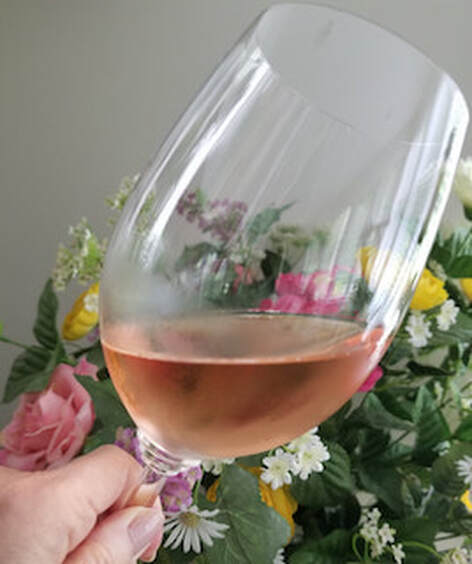
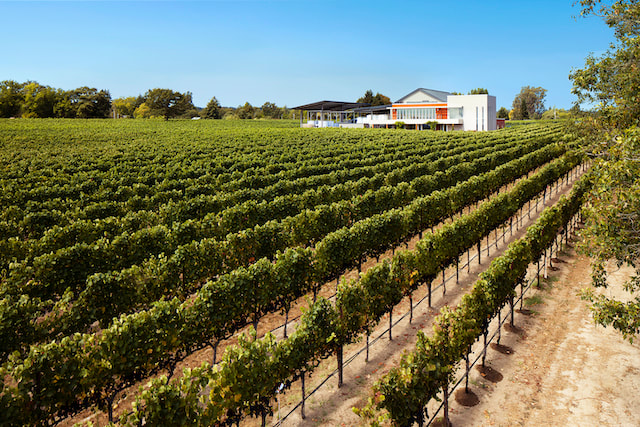
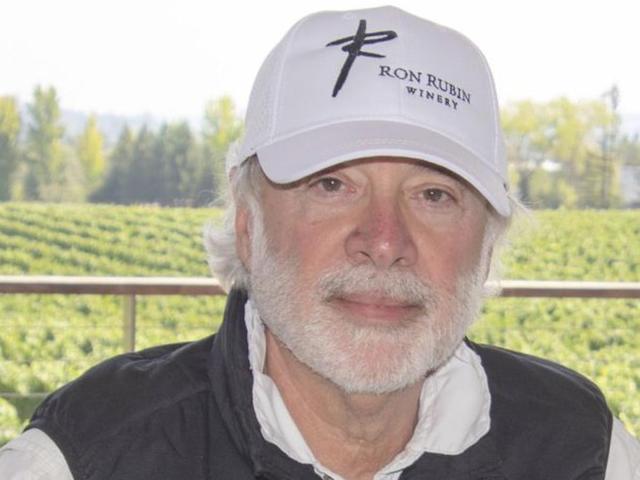


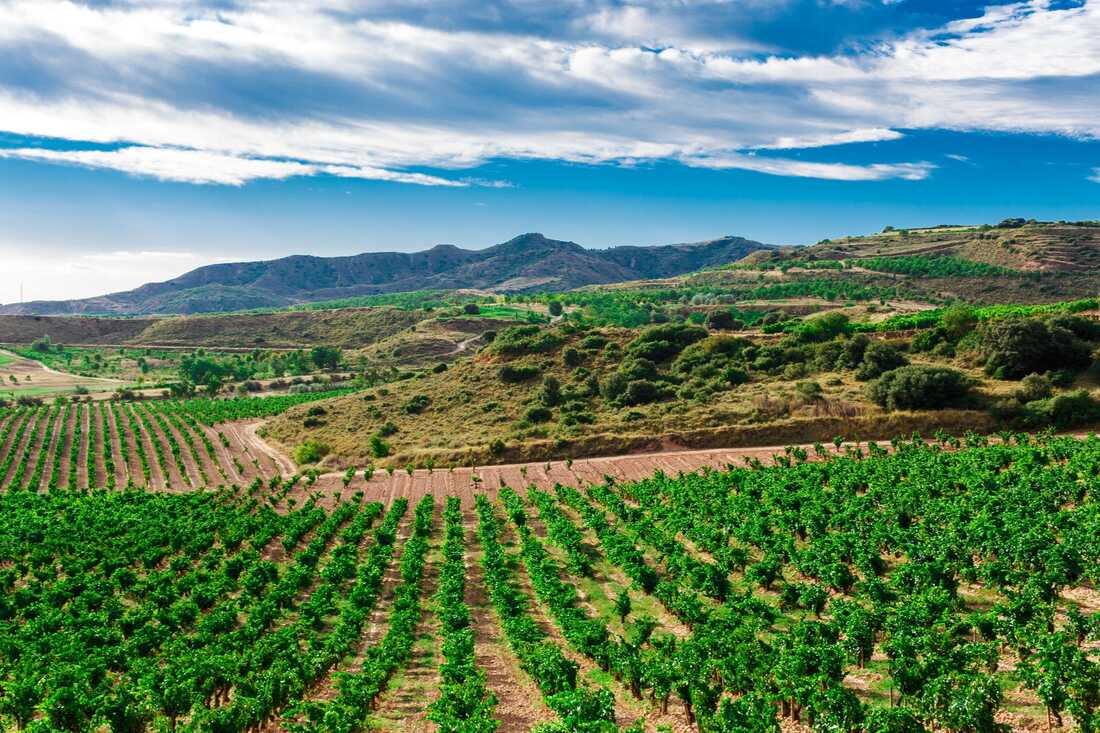

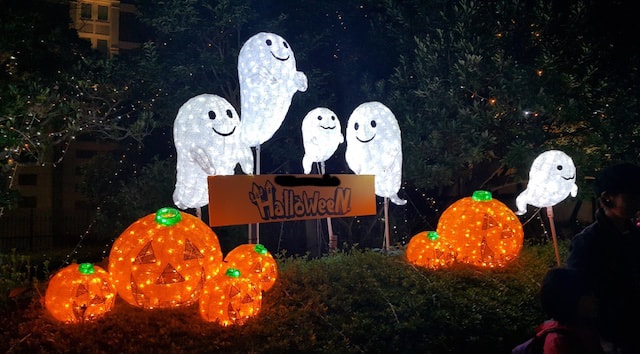
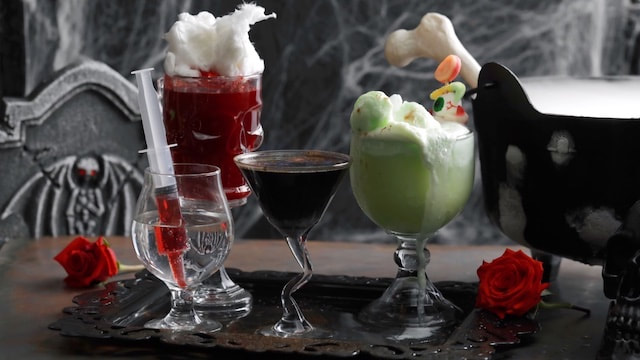
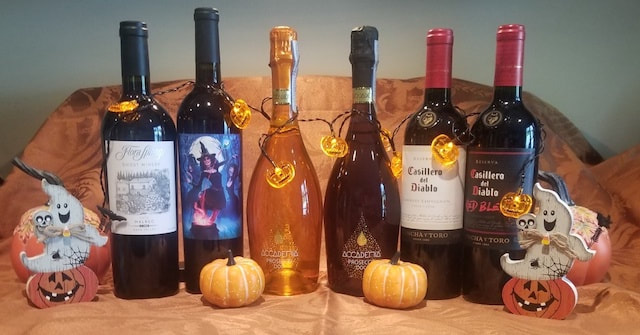
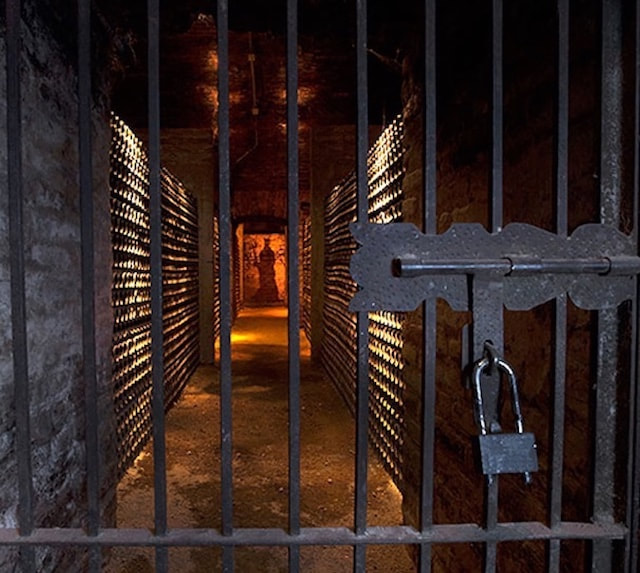
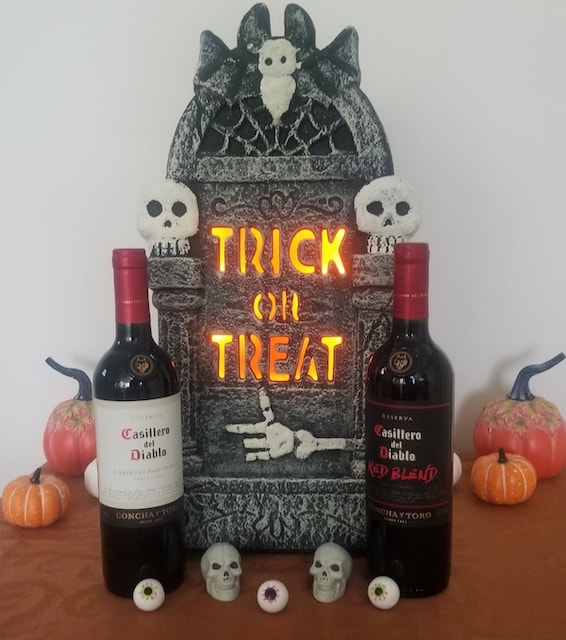
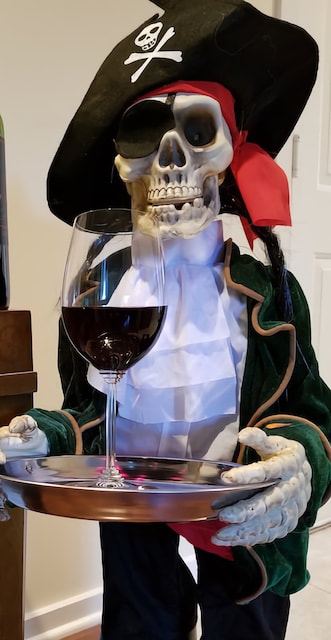
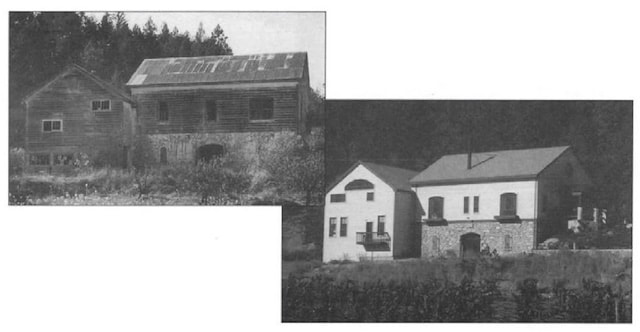

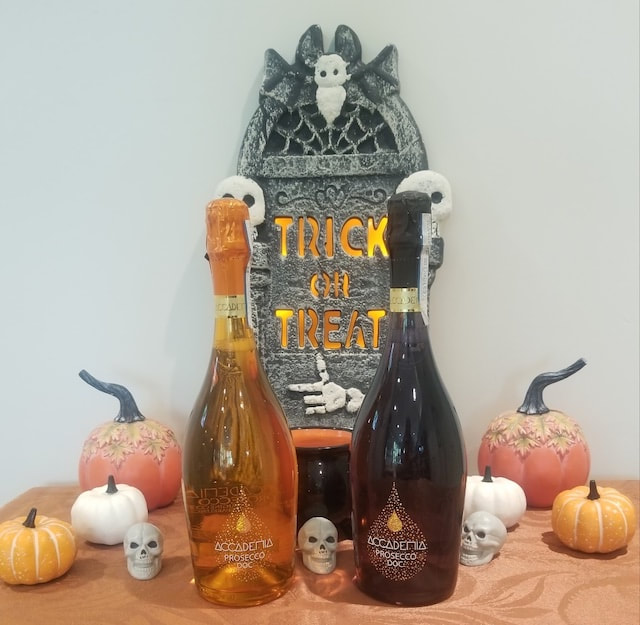
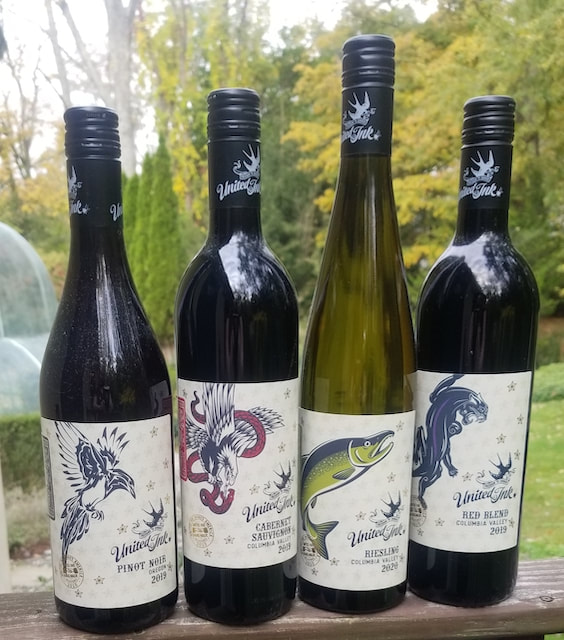
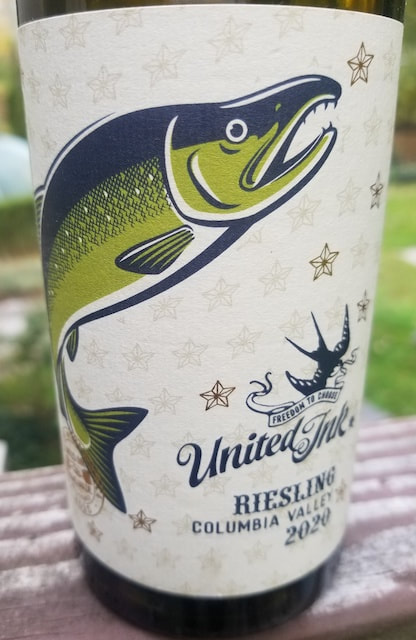
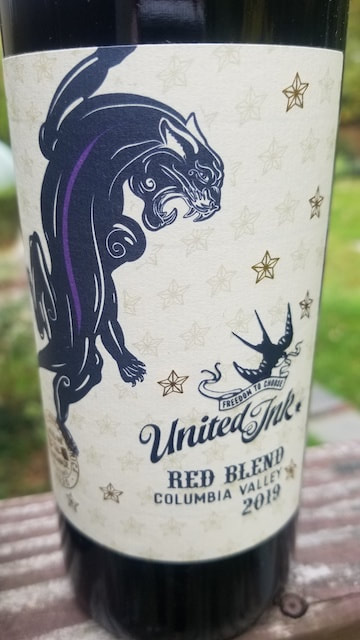
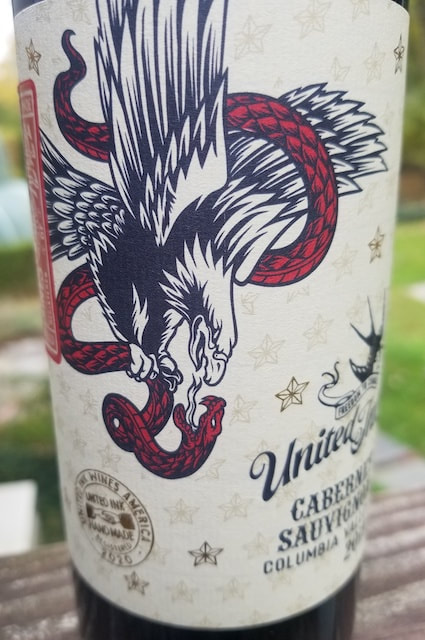
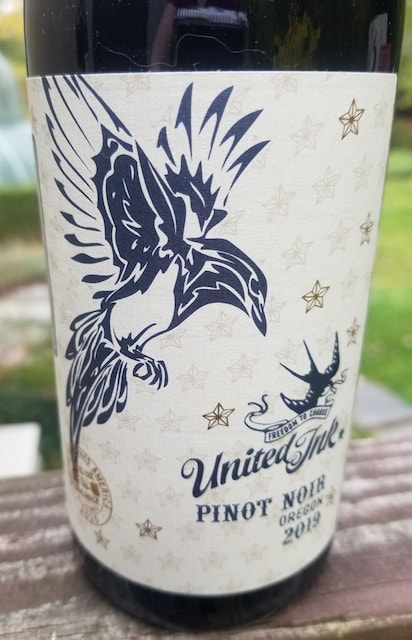
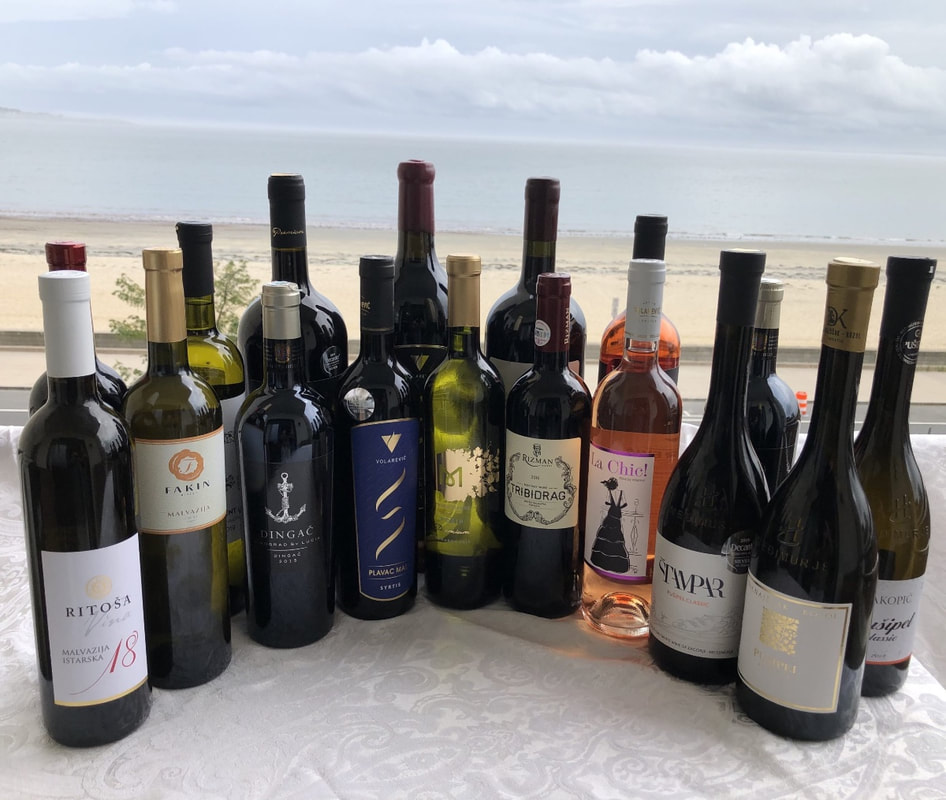

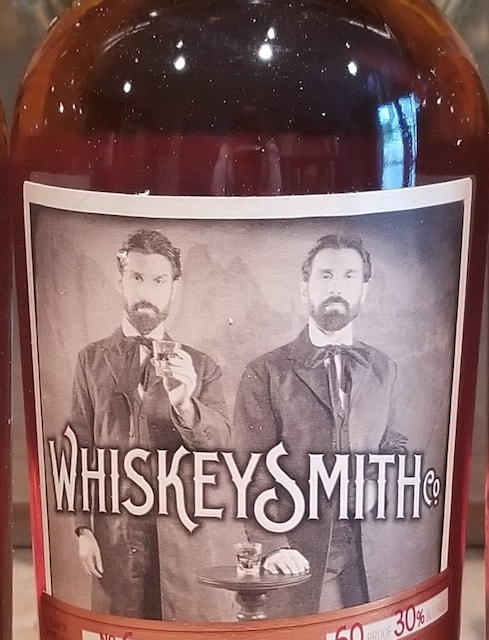
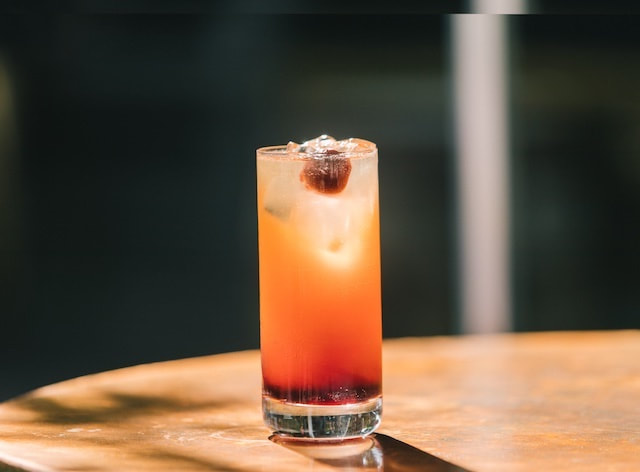
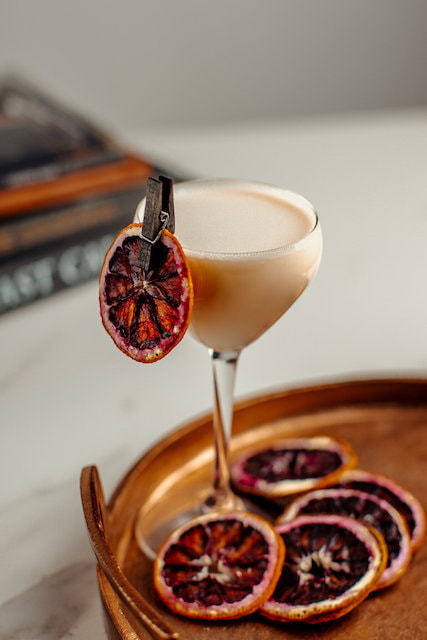
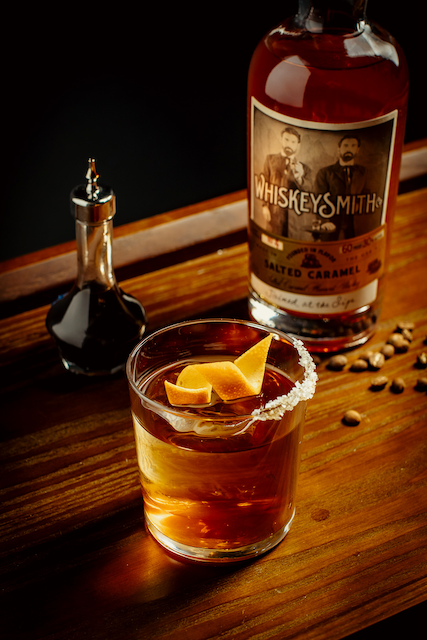
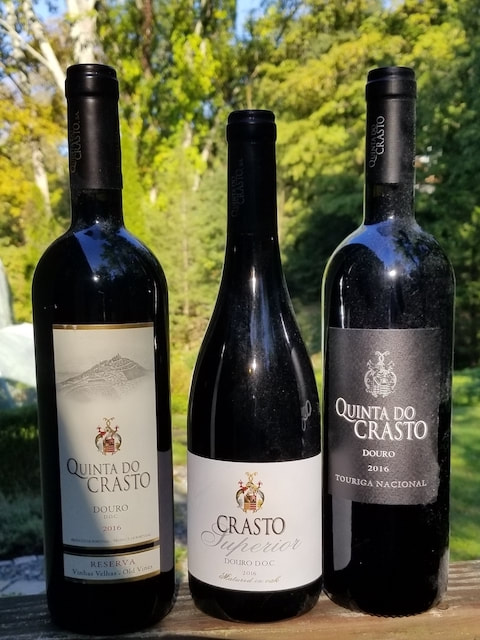
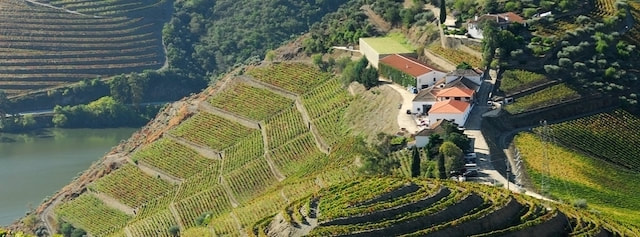
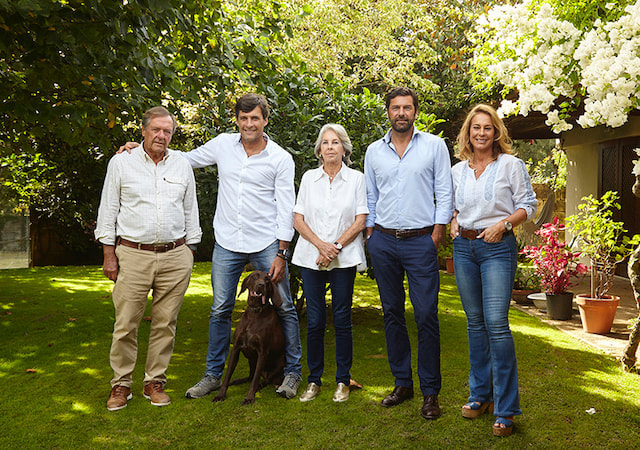
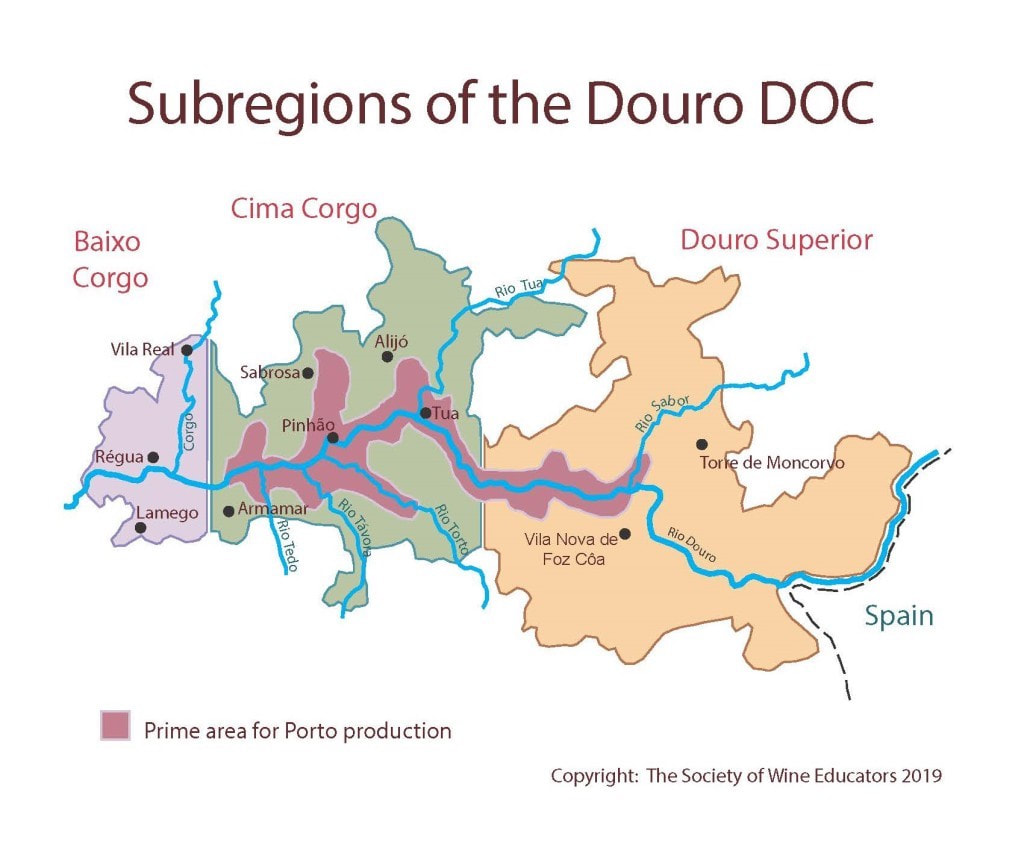
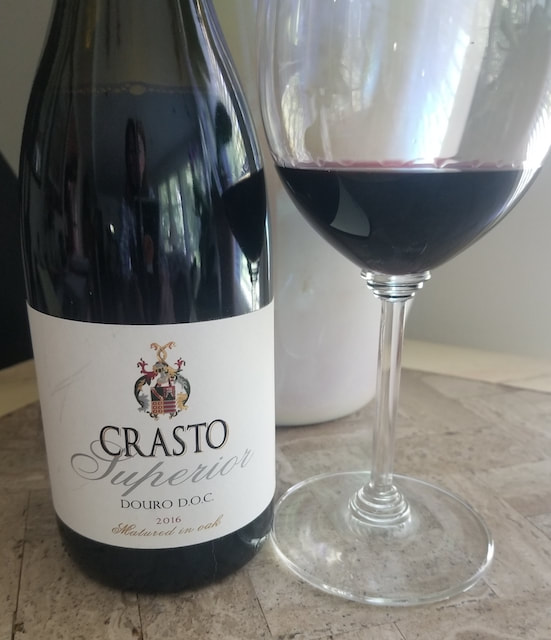
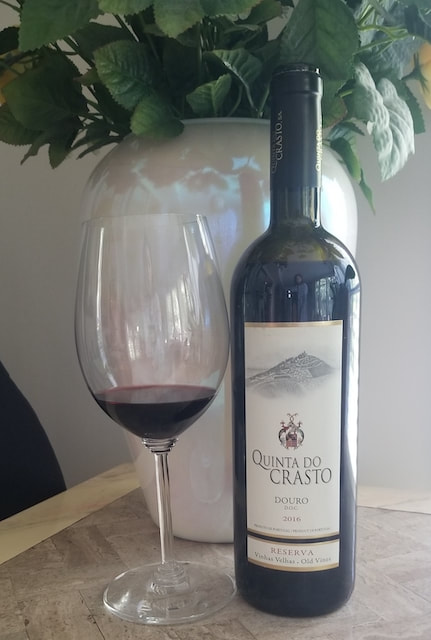
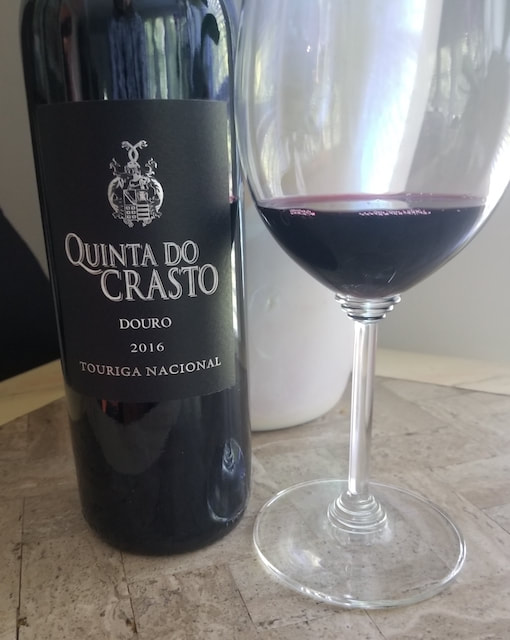
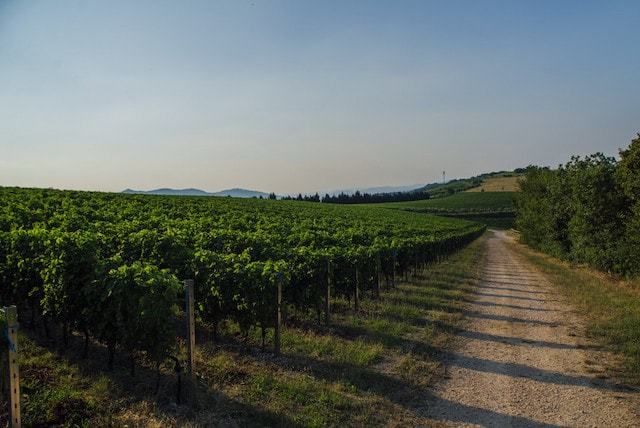

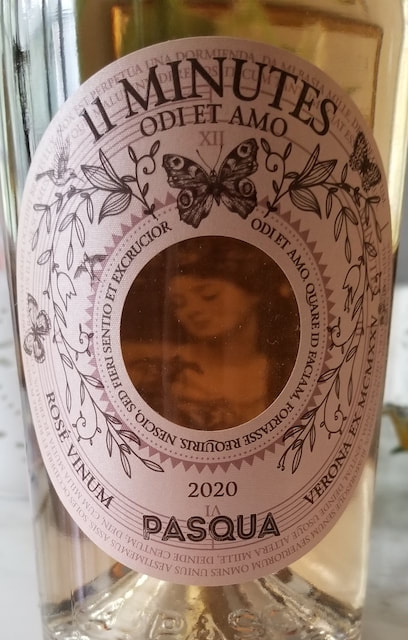


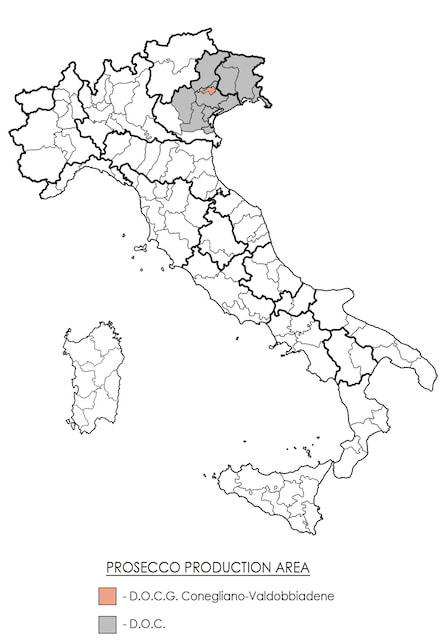
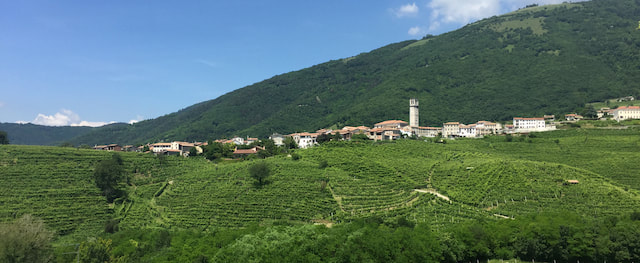


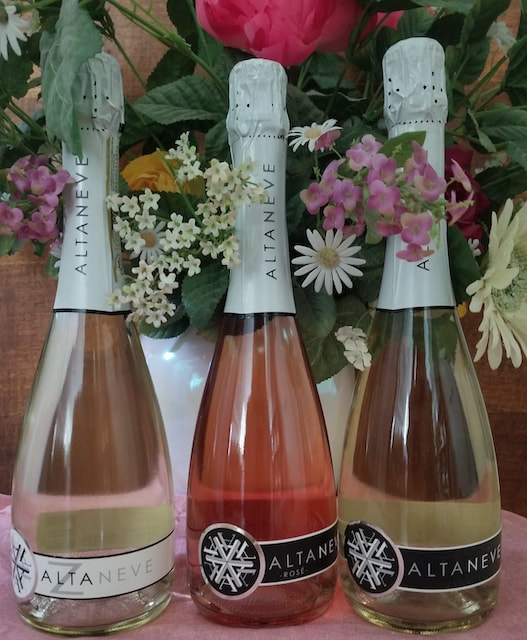
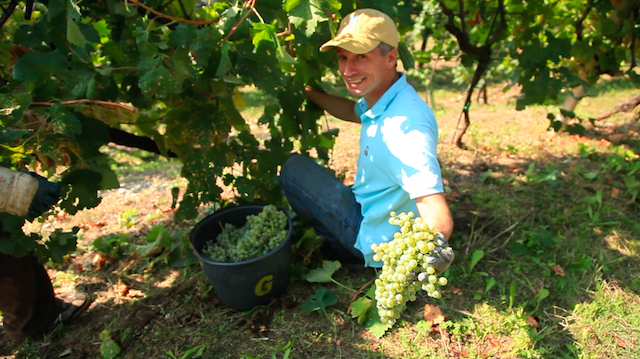

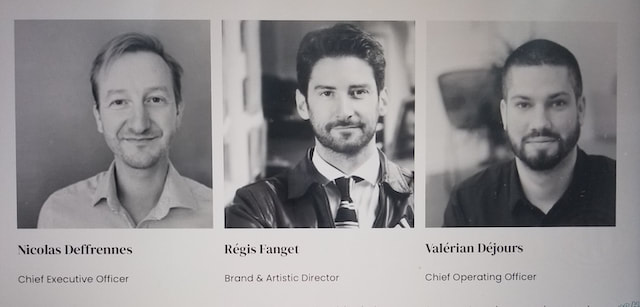
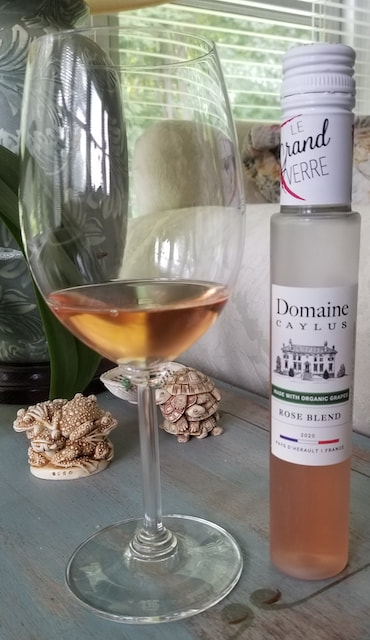
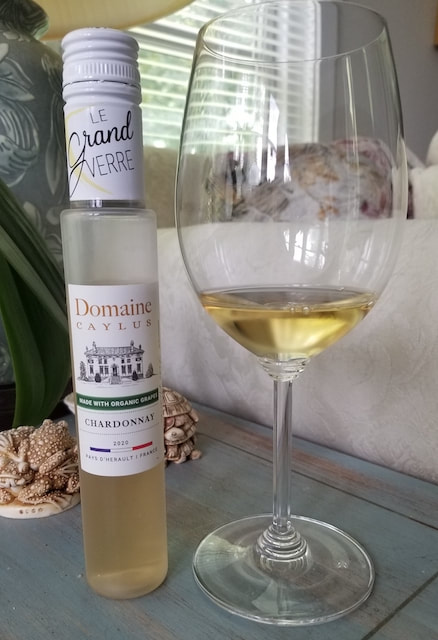
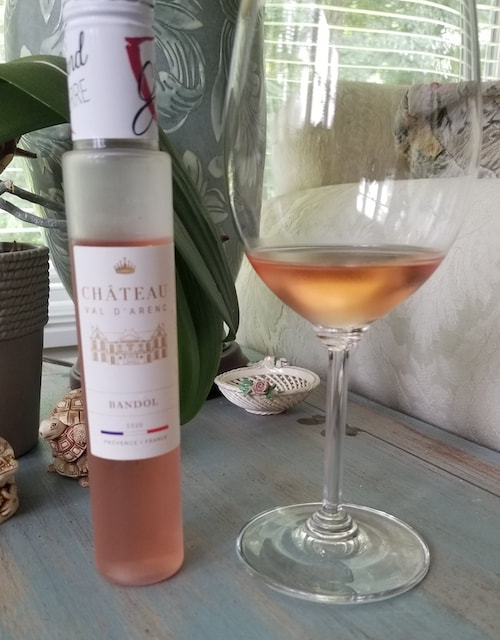
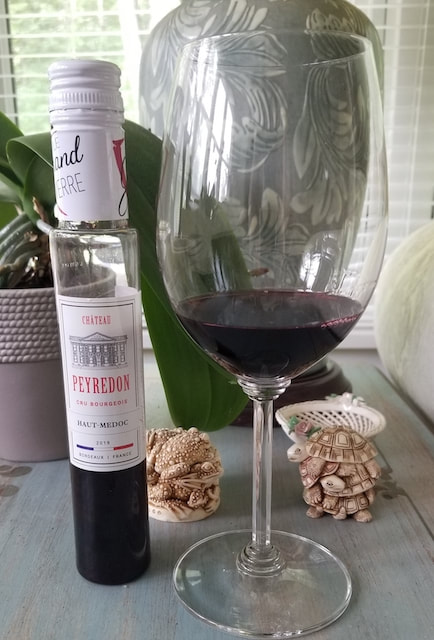
 RSS Feed
RSS Feed